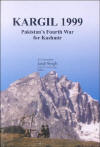|
| Home | About Kashmir Herald | |
Volume 1, No. 8 - January 2002 |
|
|
|
Jaish-e-Mohammad (JeM) Jaish-e-Mohammad (Army of Prophet) was floated by Maulana Masood Azhar in February 2000, immediately after his release in the hijack drama of Indian Airlines plane IC814 in December 1999. The JeM is ideologically, and in terms of organizational links, an extension of the Harkat-ul-Ansar, that was banned by the US in 1997, owing to its reported association with bin Laden. Harkat-ul-Ansar rechristened itself as Harkat-ul-Mujahideen in 1998. Though the leaders of the JeM are all foreigners, the group has dependable local recruits, and this makes it a deadly adversary. Though known for its hit-and-run attacks on police and security forces, its big operation was the one on the Badami Bagh Cantonment, when one of its members drove a hijacked car loaded with explosives into the main gate of the cantonment on April 19, 2000. It marked the first suicide bomb attack in the 13-year-old history of Kashmir militancy. Police assert that the JeM, with its small and committed network in parts of the old city and some areas up-town, was also responsible for other daylight attacks. The emergence of the
JeM revolves round Maulana Masood Azhar, the Harkat leader who was
jailed in Kashmir. He was finally released on December 31, 1999, when
External Affairs Minister Jaswant Singh flew him along with two others
to Kandahar, and bartered them for the release of the hijacked plane and
its passengers. The creation of JeM was the first act of a freed Azhar.
The Jaish-e-Mohammad (JeM) has owned responsibility for October 1, 2001 strike on Jammu and Kashmir Legislative Assembly. It is stated to be the only one connected to Osama bin Laden's Al-Qaida. Strong Deobandi creed forms the primary religious and ideological base for Jaish as well as Taliban. In fact, the Taliban movement was launched by the students of the very network of 9000 madrasas which the Jaish's (formerly Harkat) parent organisation -- Jamiat-e-Ulemai-Islam -- runs across Pakistan. Masood only knit the ties stronger after his release (Kandhar hijacking in 1999) as he toured Kandhar to secure the blessings of Taliban leadership soon after he planned to launch Jaish Mohammad or the `Army of the Prophet'. Moulana Azhar Masood, who is emerging as the ultimate leader of Deobandi pan-Islamist militants in Kashmir, has however been directly associated with madrassas, Jamia Abu Yousuf, Madipore Karachi and Jamiat-ul-Uloomi Islamiyah in Binori town of Karachi. The Binori madrassa has around 8,000 students and many a top Taliban leadership is product of this institute. According to Ahmad Rasheed, this madrassa sent 600 students to join Taliban in 1996 alone. Courtesy: |
 |
 |
 |
|
| Archives
| Privacy Policy |
Copyrights
| Contact
Us | |
||